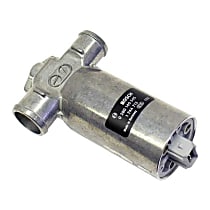{
"lazyNodes": false,
"abFitnotesFlag": false,
"abCrawlReviews": false,
"productOptionsCookie": false,
"orderDelayFlag": false,
"skipSessionCookie": false,
"covidMessage": false,
"fullTitleCookie": false,
"nrLoggerCookie": false,
"checkoutReviewCookie": false,
"productOptionSeqCookie": false,
"maintenanceFlag": false,
"bufferETACookie": false,
"multiShippingDiscountFlag": false,
"newFitmentFlag": false,
"surveyOptInFlag": false,
"crossSellFlag": false,
"skuMappingFlag": false,
"paySplitCookie": false,
"callDisableFlag": false,
"zipPaymentFlag": "u",
"hassleFreeReturn": false,
"lifetimeReplacement": false,
"cpn_off": false
}BMW 328i Idle Control Valves
Shop Catalog
![]() WARNING: This product can expose you to chemicals including Lead, which is known to the State of California to cause cancer and birth defects or other reproductive harm. For more information go to www.P65Warnings.ca.gov.
WARNING: This product can expose you to chemicals including Lead, which is known to the State of California to cause cancer and birth defects or other reproductive harm. For more information go to www.P65Warnings.ca.gov.
![]() WARNING: This product can expose you to chemical which is known to the State of California to cause cancer and birth defects or other reproductive harm. For more information go to www.P65Warnings.ca.gov.
WARNING: This product can expose you to chemical which is known to the State of California to cause cancer and birth defects or other reproductive harm. For more information go to www.P65Warnings.ca.gov.
![]() WARNING: This product can expose you to chemical which is known to the State of California to cause cancer and birth defects or other reproductive harm. For more information go to www.P65Warnings.ca.gov.
WARNING: This product can expose you to chemical which is known to the State of California to cause cancer and birth defects or other reproductive harm. For more information go to www.P65Warnings.ca.gov.
![]() WARNING: This product can expose you to chemical which is known to the State of California to cause cancer and birth defects or other reproductive harm. For more information go to www.P65Warnings.ca.gov.
WARNING: This product can expose you to chemical which is known to the State of California to cause cancer and birth defects or other reproductive harm. For more information go to www.P65Warnings.ca.gov.
Customer Guides
Indicators of a Bad Bmw 328i Idle Control Valve
It's never a good idea to have your Bmw 328i die on you in the middle of a traffic jam. Imagine the stress you'd have to endure when this happens. First is the bumper-to-bumper congestion you're in, followed by an engine that feels like it'll give way any time soon, and finally-when it eventually does-the anger other drivers have towards you because you made the traffic worse. Blame it all on the bad idle control valve installed on your car. This is a problem common on the 328i. To know if the ones in your car are about to cause you problems, look for any of these signs:
Stalls and deaths
A stalling symptom of a bad idle control valve usually occurs when a running car is at a slow speed. This happens because the mechanisms and valves inside, such as the idle control valve, have failed to properly regulate the oil and air mixture in the engine to keep it running. Aside from a decelerating or slow car, it's also possible that the engine immediately stalls right after the 328i is freshly started. It may seem fine the first few seconds after ignition, but then begins to stutter, and finally dies. Both scenarios indicate a bad idle control valve.
Wild RPM
There's also a way to know if you have a bad idle control valve on your car without the need for the engine to die. With the car just creeping or at a standstill, observe the RPM needle of the tachometer. A perfectly running car should have a steady reading (at around 1,000 to 1,500 RPM). If it appears as if the needle tends to drop, then suddenly jumps, before it settles on a value, this should tell you that there's a problem with the valve in question.
Physical defects
Other than these performance-related symptoms, you can also check the parts surrounding the idle control valve. Look for any cracks, tears, and possible air leaks on the intake plumbing. There may also be too much dirt on the valve and the rest of the throttle body. These defects hinder the smooth and steady flow of air which results to wild RPM readings or a dead engine.
Getting rid of stuttering and idling issues involves maintaining the idle control valve of your Bmw 328i. Damaged and clogged ones are pretty common for this model. For a part that plays a big role in how your car performs, it's good to know that taking care of this valve is one of the easiest and simplest jobs you can do. Here are some things you can do to take care of your Bmw 328i's idle control valve. All it takes is only 30 minutes up to an hour and you'll have an engine that's running without any unwanted knocks.
Power testing
The idle control valve is mostly responsible for the regulation of air inside the engine. Since this runs on electricity, it is important that you verify the part is powered all the time. If it suddenly looses energy, you might be surprised to find yourself in a car with a troubled or stalled engine. To check for this, unplug the idle control valve from the engine and switch the ignition key to the on
position. Plug a voltmeter to the connectors. A good reading should show a result between 10.5 to 12.5 volts.
Regular cleaning
If you feel any symptoms related to a dirty idle control valve-stalled engine, jumpy RPM, rough idle-it's a good idea to unplug and give it a good clean. Dip the part in a bath of carburetor fluid to get rid of the layer of black soot on the surface. Clean the throttle body as well. Too much dirt in this part also contributes to staining problems of the idle control valve.
Replacing the gasket
It's always recommended that you have a supply of replacement gaskets handy every time you work on the idle control valve. These seals tend to deteriorate fast due to the constant changes in temperature around the valve region whenever you operate the car. Bad gaskets eventually lead to coolant leaks and other problems you'd want to avoid. Remember to take the time to allow these new gaskets to sit and settle to ensure you have a tight fit.













